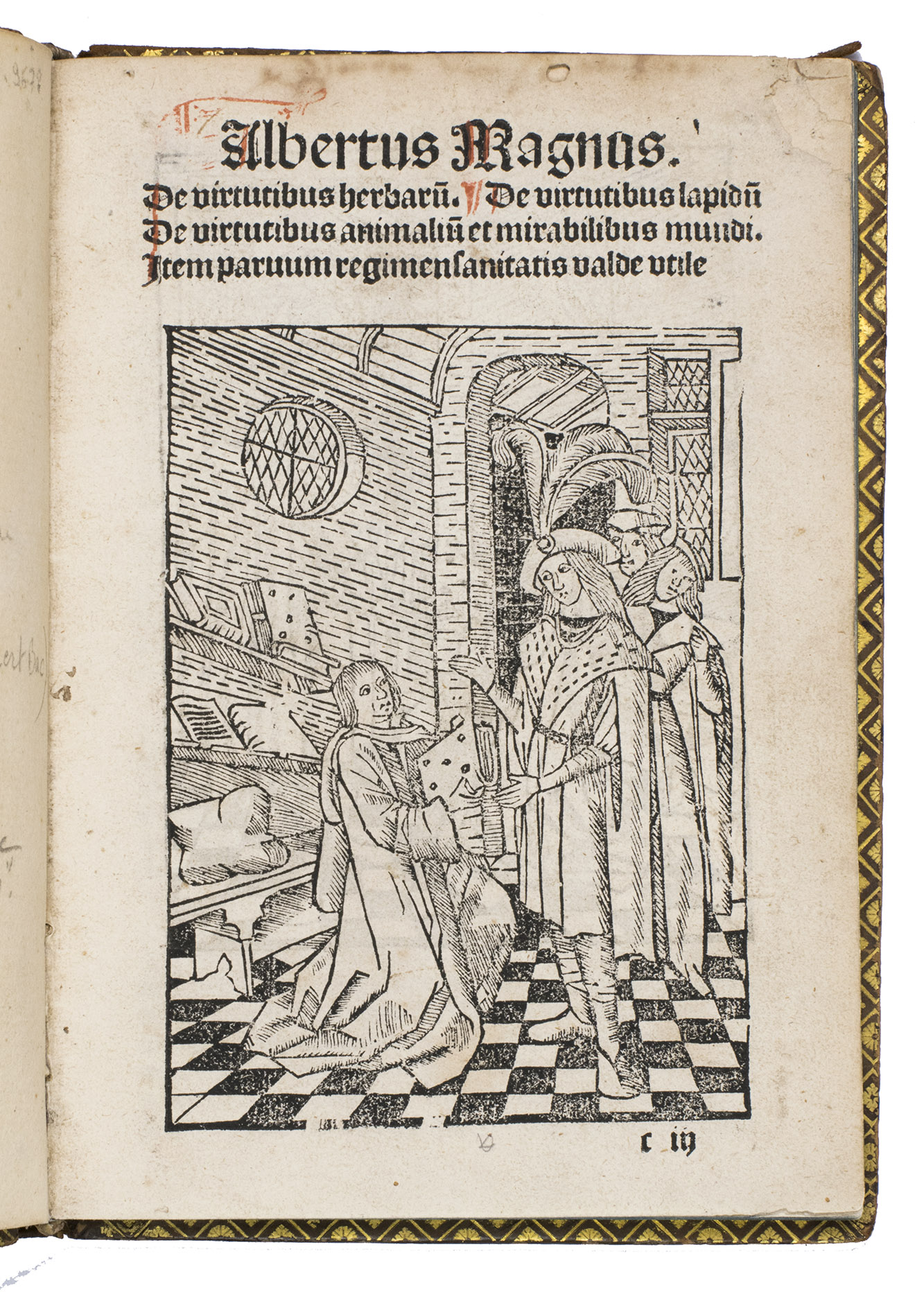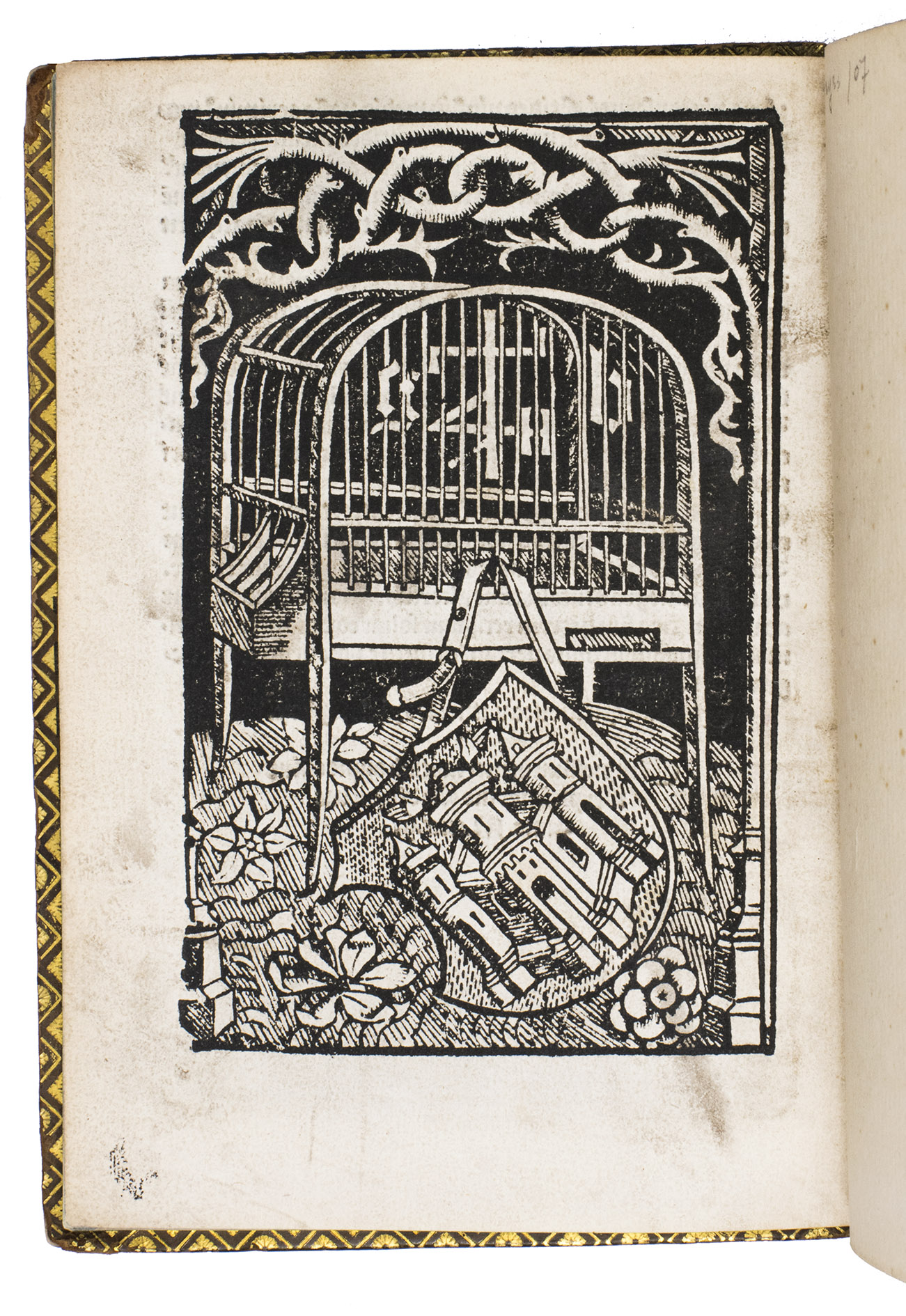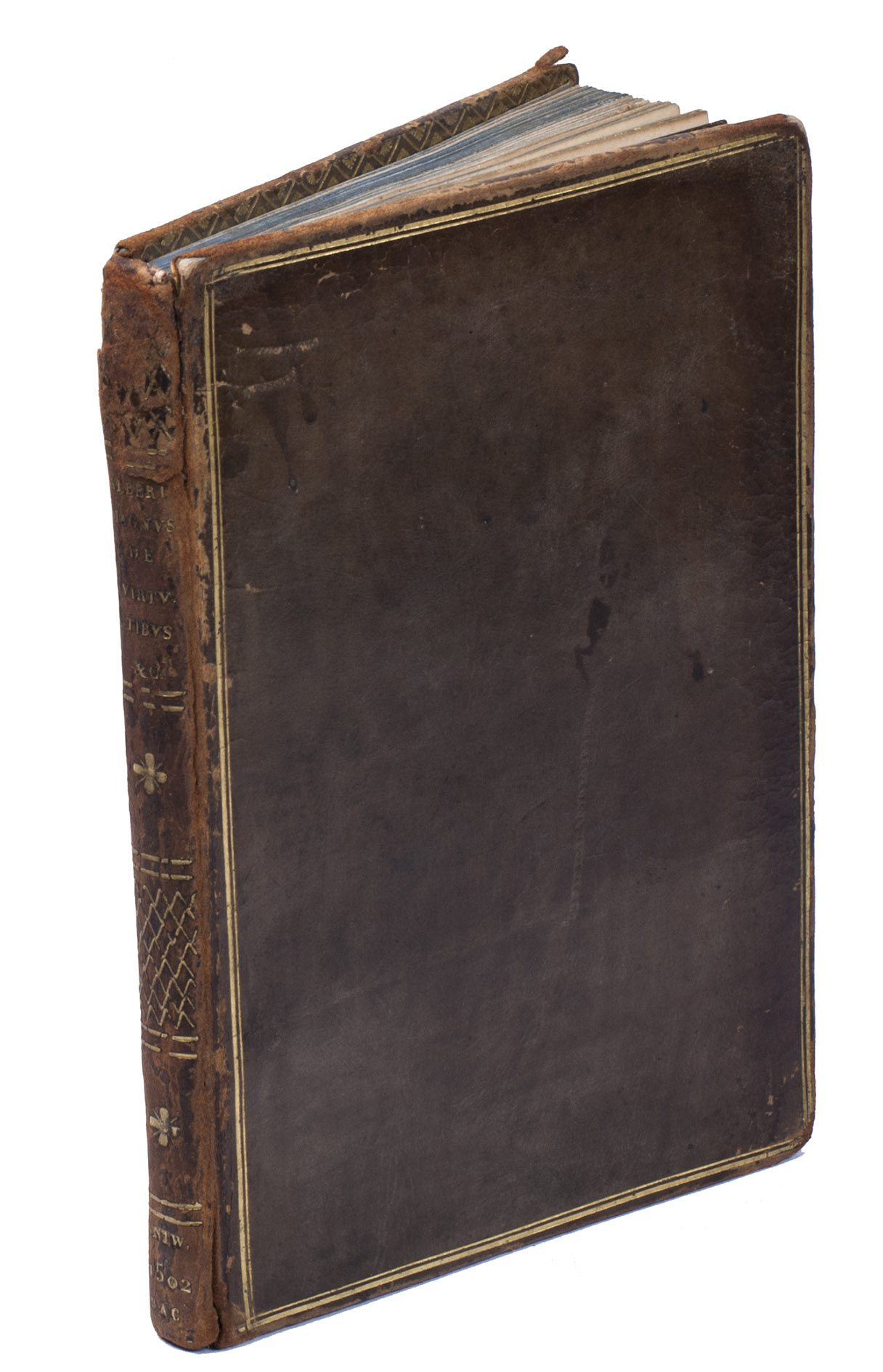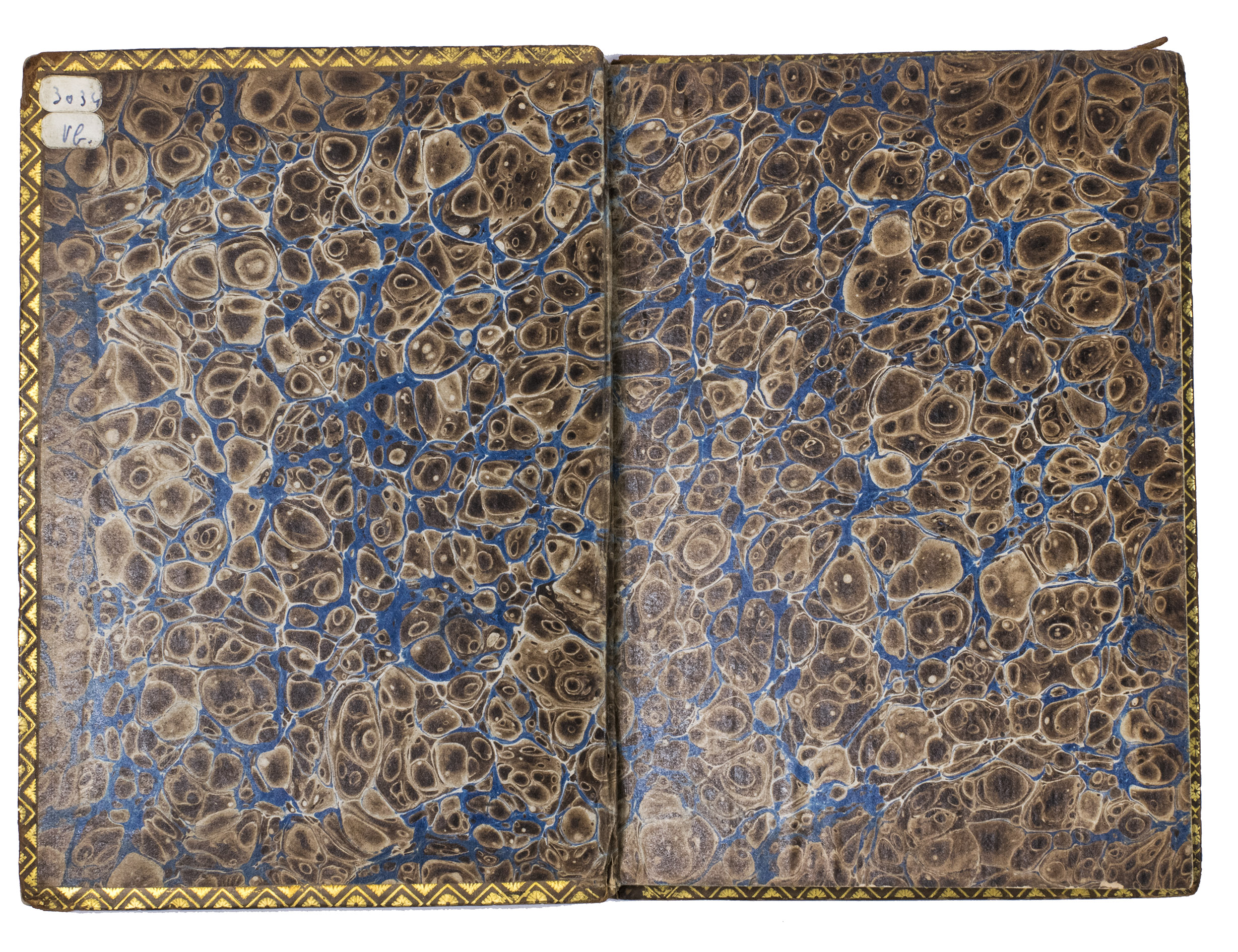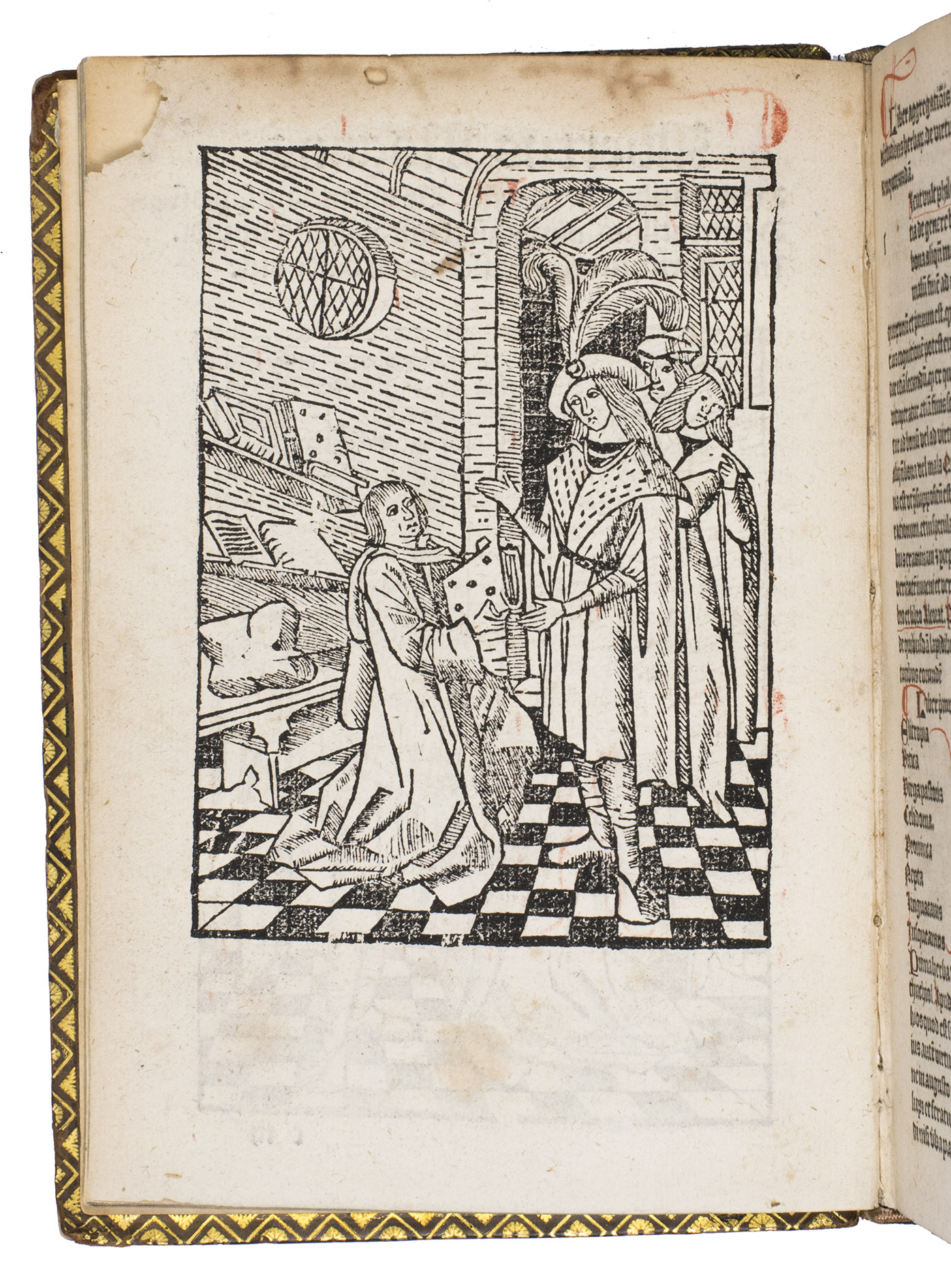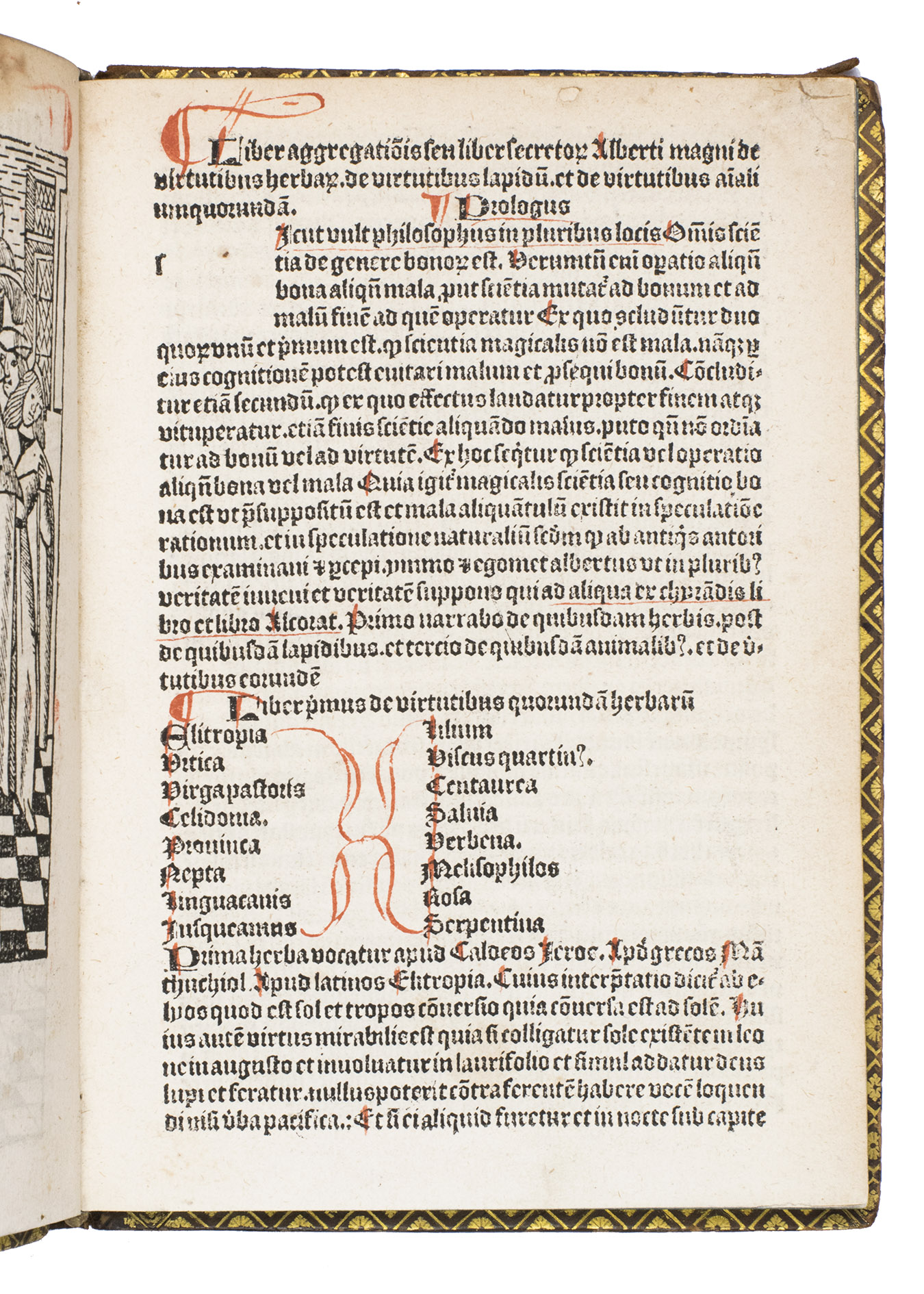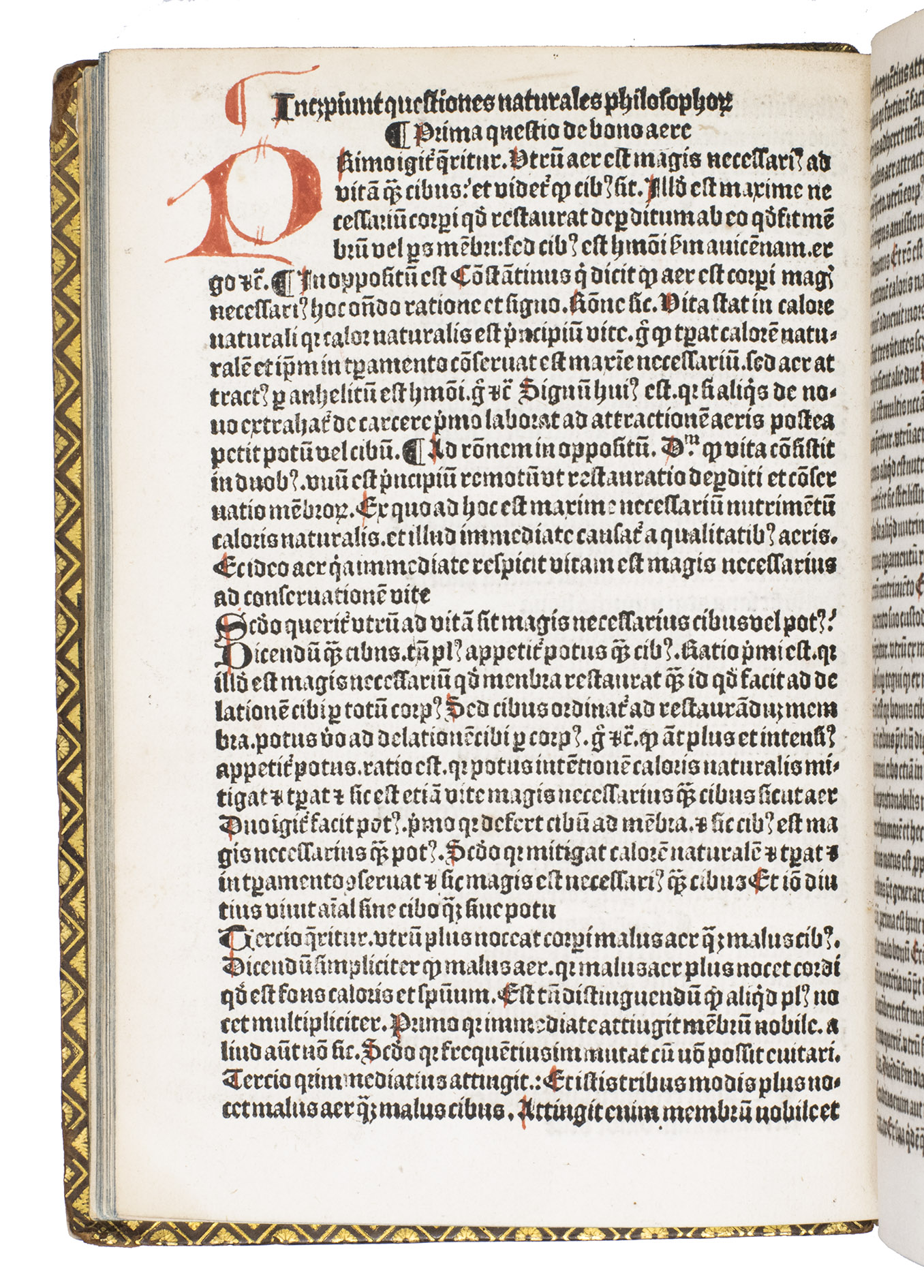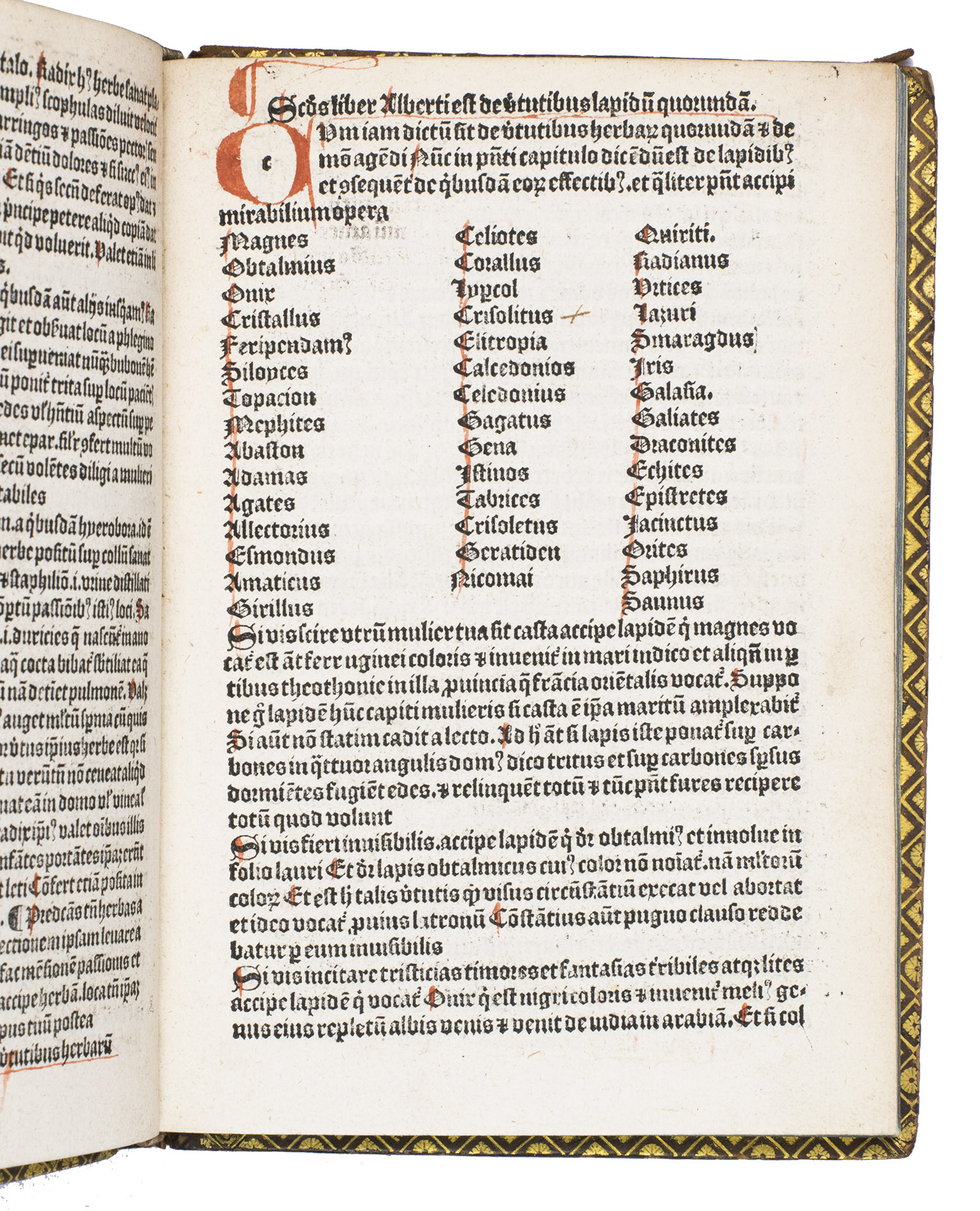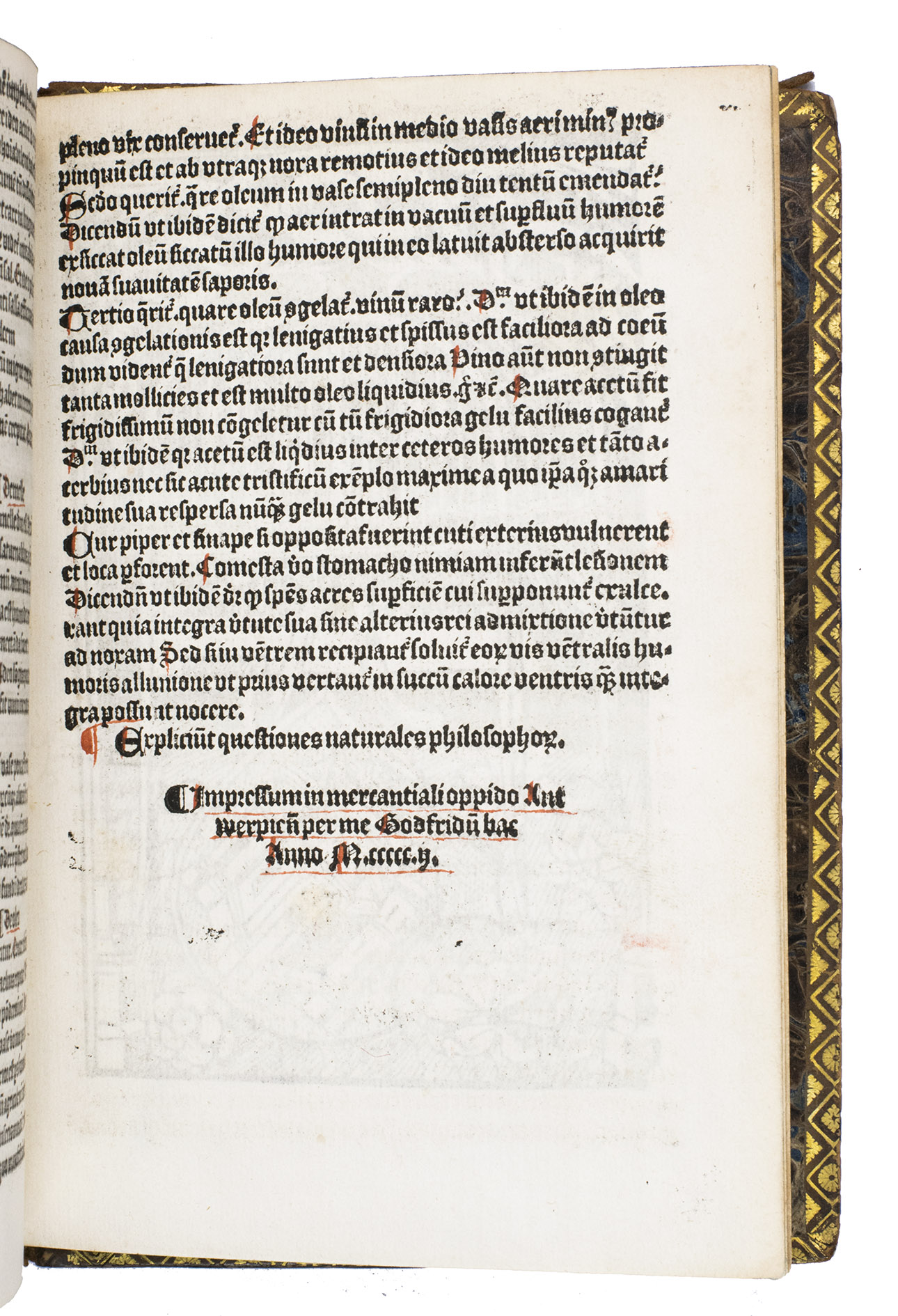ALBERTUS MAGNUS (pseudo).
De virtutibus herbarum. De virtutibus lapidum. De virutibus animalium et mirabilibus mundi. Item parvum regimen sanitatis valde utile. [Liber aggregationis and De mirabilibus mundi].
[colophon (f4r):] Antwerp, Govaert Bac, 1502. 4to. With a full-page woodcut on the title-page (a monk offering a book to a prince), repeated on the back of the title-page, and Govaert Bacs full-page woodcut printer's device of on the verso of the last leaf. With 3- and 4-line lombardic initials and smaller 2-line initials, supplied by hand in red. Rubricated throughout. 19th-century calf with double gold fillets along the edges of both boards. [36] ll.
€ 35,000
Very rare Antwerp edition of two works written ca. 1300 by an unidentified follower of Albertus Magnus concerning three treatises, generally known as the Liber aggregationis, concerning the extraordinary properties (magical, astrological, medicinal) of plants and herbs, minerals and gems, and animals, followed by the De mirabilibus mundi on the "wonders of the world".
The Liber aggregationis is followed, as in many editions, by the De mirabilibus mundi, here on b4r (with the rubric on b3v). This work on the marvels of the universe covers a variety of topics: astrology, zoology, astronomy, medicine and physiology. Instead of the more experimental character of the first treatise, this work is a more scholastic and philosophical treatise. It discusses for example the validity, causes and principles of magic before starting to list the different "wonders" that show that the mind or human soul can alter its own body or exterior objects, especially at a favourable astrological hour. It also discusses the magic power of human beings and several cures for various diseases. It also includes some recipes that to make magical or optical illusions, such as a recipe for manufacturing marvellous candles, lights and combustibles, a recipe to break a love charm, to see the future while asleep and to catch birds by your hands.
Both the Liber aggregationis as the De mirabilibus mundi were very popular. They were first printed (also together) in Ferrara by Severinus Ferrariensis about 1477 (GW 630). The first edition in the Low Countries was published between 1487 and 1490 by the Antwerp printer Mathias van der Goes (GW 654 or 659). The printer of our edition, Govaert Bac, married the widow of Mathias van der Goes and thereby acquired his typographical material. He printed his first edition of this work in 1498. Although most of Bac's books are undated, especially his post-incunables, the present rare edition is dated M.CCCC.II (1502). Despite the many editions printed in the 16th century, the present edition is of the utmost rarity: the USTC records only three copies: Staats- und Universitätsbibliothek Hamburg, Universitetsbibliotek Uppsala and Cambridge University Library. We could not trace any further copies.
With some contemporary underlinings in the text in brown ink. Head and foot of spine cracked, binding a little worn around the extremities, title and the verso of the last leaf somewhat dust-soiled, upper right corner of the first two leaves frayed (without loss of text) and a small hole in the upper margin of both leaves (not affecting the text). Otherwise in good condition. Adams A538; Nijhoff & Kronenberg 58 (3 copies); Netherlandish books 422 (same 3 copies); USTC 410548 (same 3 copies); this edition not in ISTC, STCN, STCV, WorldCat; cf. Hunt 4 (1485 Cologne ed.); Thorndike II, pp. 720-750; Wellcome I, 117 (1499 Antwerp ed. by Bac).
Related Subjects:
